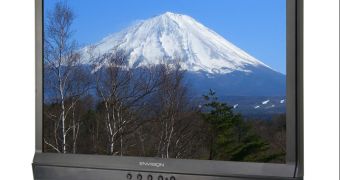As the age of Windows XP draws to a halt, more and more people are making the switch to the new operating system, and to top things over, hardware manufacturers are all up in a bunch trying to have as many Windows Vista-Ready products as possible. Getting certification from Microsoft for a hardware component ensures that it would function correctly while running a Windows-based operating system. But seeing the variety of Microsoft operating systems out there, certification is given for each and every type of OS.
We all know, or at least heard, of Windows Hardware Quality Labs (WHQL) certification for drivers, which is the same thing but it only applies to software compatibility with the OS. This was one of Microsoft's first attempts of having the upper hand and delivering compatible software which would work on any type of hardware. By doing this, other OSes, such as Linux-based ones were in a disadvantage due to what the software giant had to offer. But you have to see both sides of the story in order for it to make sense to you; a lot of people use Windows, and a lot of people complain about it, saying that they have a lot of problems with hardware devices, and incompatibilities, and the dreaded Blue Screen of Death (BSoD) message you would get when something went terribly wrong.
So Microsoft's idea was to try to put the blame on somebody else's shoulders, by saying that the drivers don't have WHQL digital signatures and, that was it, you couldn't blame Microsoft anymore, it was those damn drivers. Moving a little bit forward, the second idea that came to them, regarding this subject, was to give out hardware compatibility certification. And when Vista came around, so did the Vista-ready logo for hardware components. Now everybody was in danger of failing the certification, and had to come up with better, performance wise, components.
From their ranks came Envision Peripherals Inc., a company that is home for the AOC and Envision branded displays. They have received the Windows Vista-Ready logo for the 19-inch Envision H1981 LCD monitor and the 17-inch Envision H1781 monitor. H1981 and H1781 offer a 1280x1024 resolution with an 700:1 contrast ratio, 5ms response time and have prices of $299 and $199 respectively. They also have a Vista Premium Certified monitor, the Envision G918w1 model. It has a DVI input with HDCP interface, a resolution of 1440x900 and a 800:1 contrast ratio. The response time is also of 5ms and the MSRP is of $219.
The interesting fact is to go a little bit underneath Microsoft's skin and find out just how many features these monitors must have in order to be Vista-ready. I do agree that features such as a digital interface for HDTV is a must have for the monitors to be considered Vista Premium Ready, but I've also seen things such as a monitor's luminance level, which if it is higher or equal to 75cd/m2, it gets passed as Vista-ready, and also a 5 second time between when you call for the factory settings option and when they are available is also considered a Vista-ready "must have" option, so standards can't be all that high, or else nobody would buy the OS, not with all those free alternatives running around.

 14 DAY TRIAL //
14 DAY TRIAL //